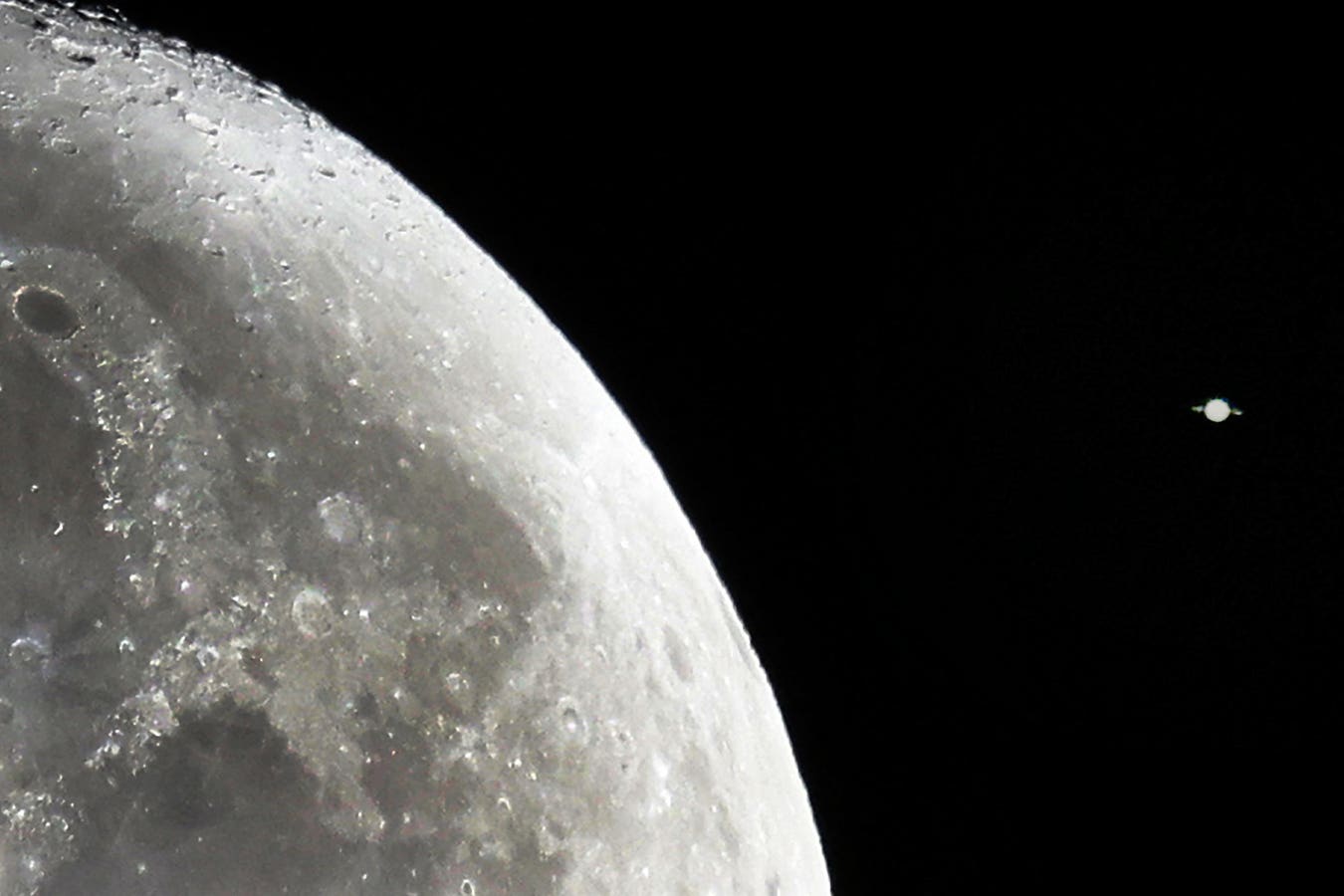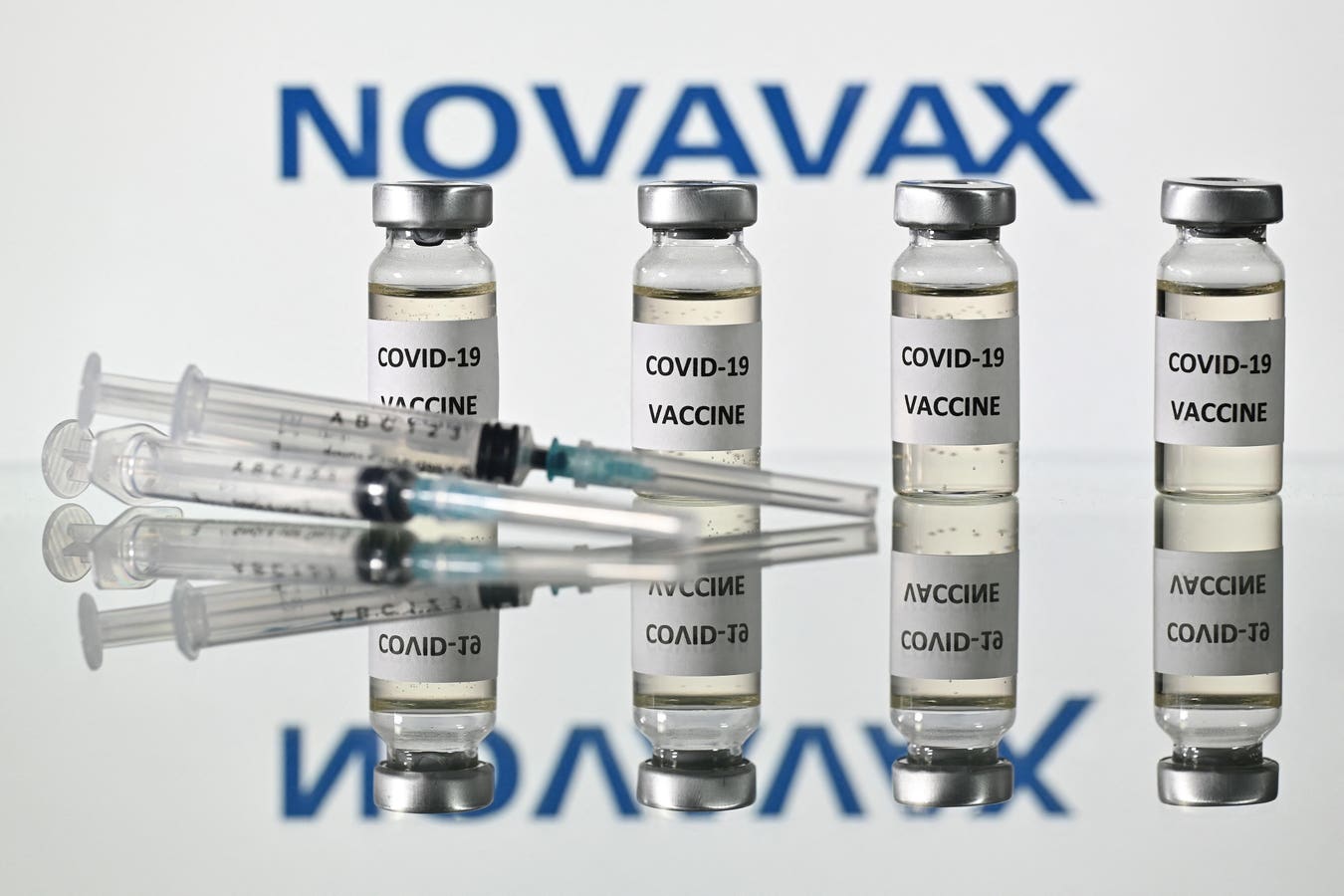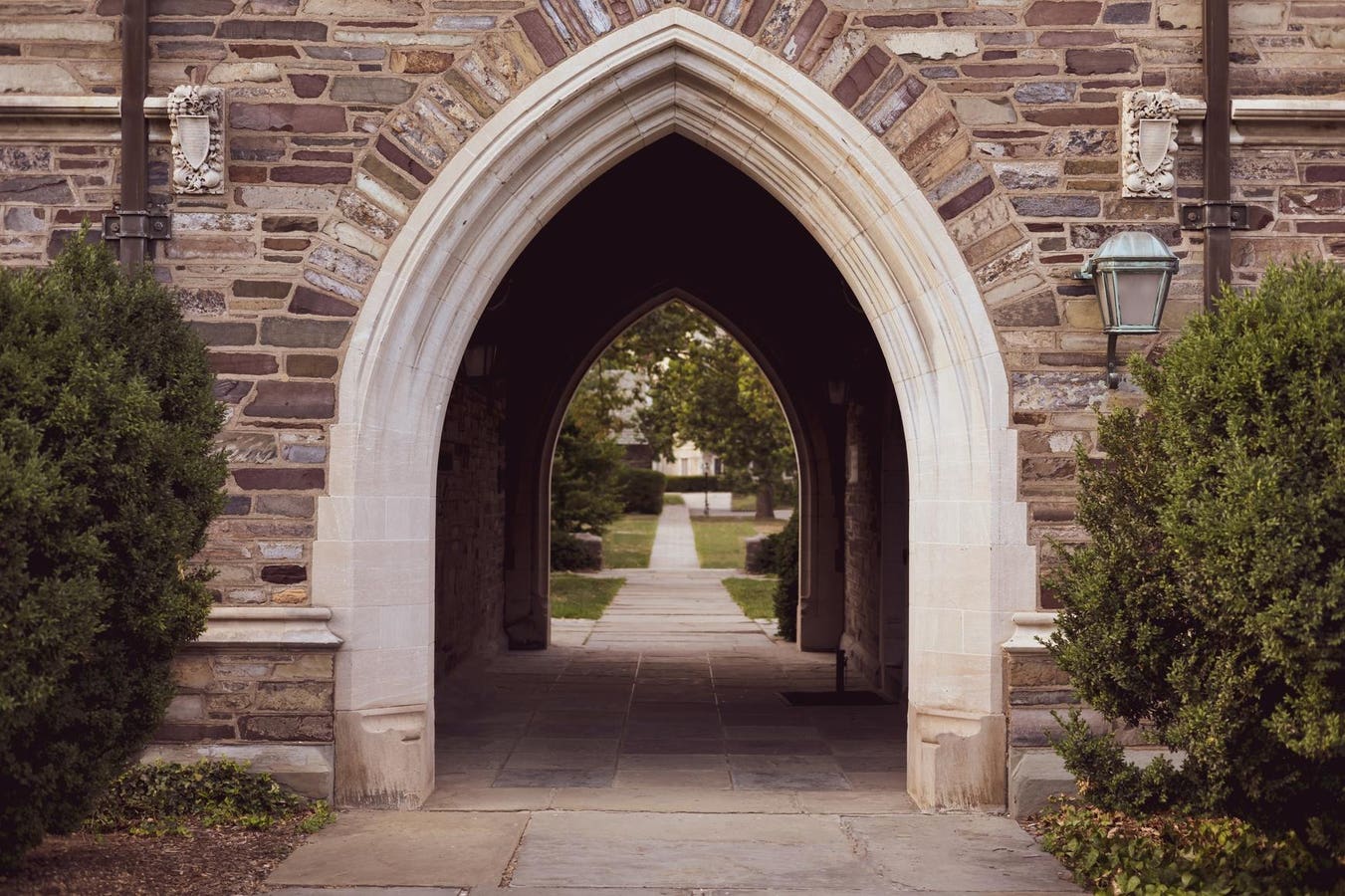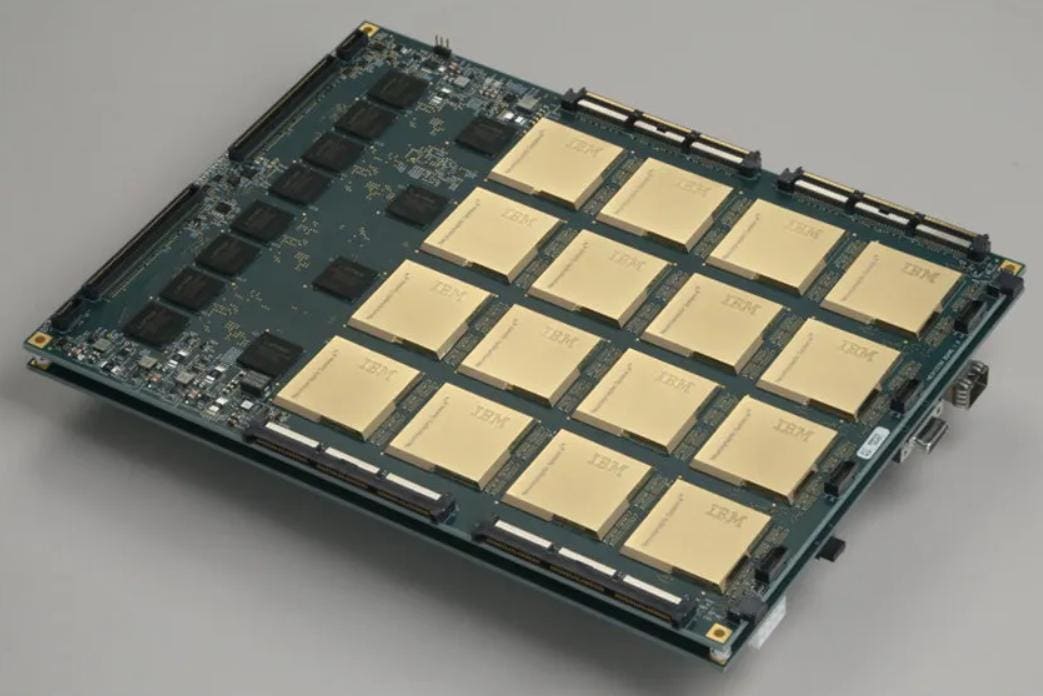The moon and Saturn, as seen from Kuwait City on October 14, 2024. (Photo by YASSER AL-ZAYYAT/AFP … More
Look to the east shortly before midnight on Tuesday, July 15, and you’ll see two of the most beautiful objects in the solar system shine together.
A waning gibbous moon, by now rising late at night, will appear first, followed by the steady, golden glow of Saturn. They’ll shine together all night, but as they rise is when to see them. Here’s everything you need to know.
Where And When To Look
The close encounter — with the moon and Saturn just two degrees apart — will take place due east. The exact time both objects rise depends on your latitude (see below to check on the precise times for where you live), but from everywhere, the moon will appear first and be followed by Saturn.
Around midnight local time, both the moon and Saturn will have climbed well above the eastern horizon and be moving into the southeast sky. They’ll gradually move westward together and be visible until dawn.
What You’ll See
The moon will be easily visible. About 70% lit, a waning gibbous moon will appear orange as it rises on the horizon. That’s because of Rayleigh scattering. At this, the thickest part of Earth’s atmosphere, shorter wavelengths of light, such as blue and violet, scatter away, while longer wavelengths — including red and orange — pass through more easily. Below the moon, Saturn will be dim but easily visible. It’s no Venus in terms of brightness, but it’s distinctive.
Tuesday, July 15: The Moon Meets Saturn
Observing Tips
No special equipment is needed. However, binoculars will help you get a lovely close-up of the moon as it rises. For Saturn and its rings, you’ll need any small telescope. Note that Saturn’s rings are currently oriented nearly edge-on as a result of the planet’s tilt and position in its orbit.
Neptune is just above Saturn, but it is also too dim to see with the naked eye and requires a large telescope to observe.
What’s Next in the Night Sky
Saturn will gradually become more prominent as it slowly brightens ahead of its opposition on September 21, when it will be at its biggest, brightest and best for telescopic viewing. By then, Saturn’s rings will have opened up a bit and be a more dramatic sight.
Meanwhile, keep an eye out for meteors from the Delta Aquarids and Alpha Capricornids, which are now active through early August.
For exact timings, use a sunrise and sunset calculator for where you are, Stellarium Web for a sky chart and Night Sky Tonight: Visible Planets at Your Location for positions and rise/set times for planets.
Wishing you clear skies and wide eyes.









